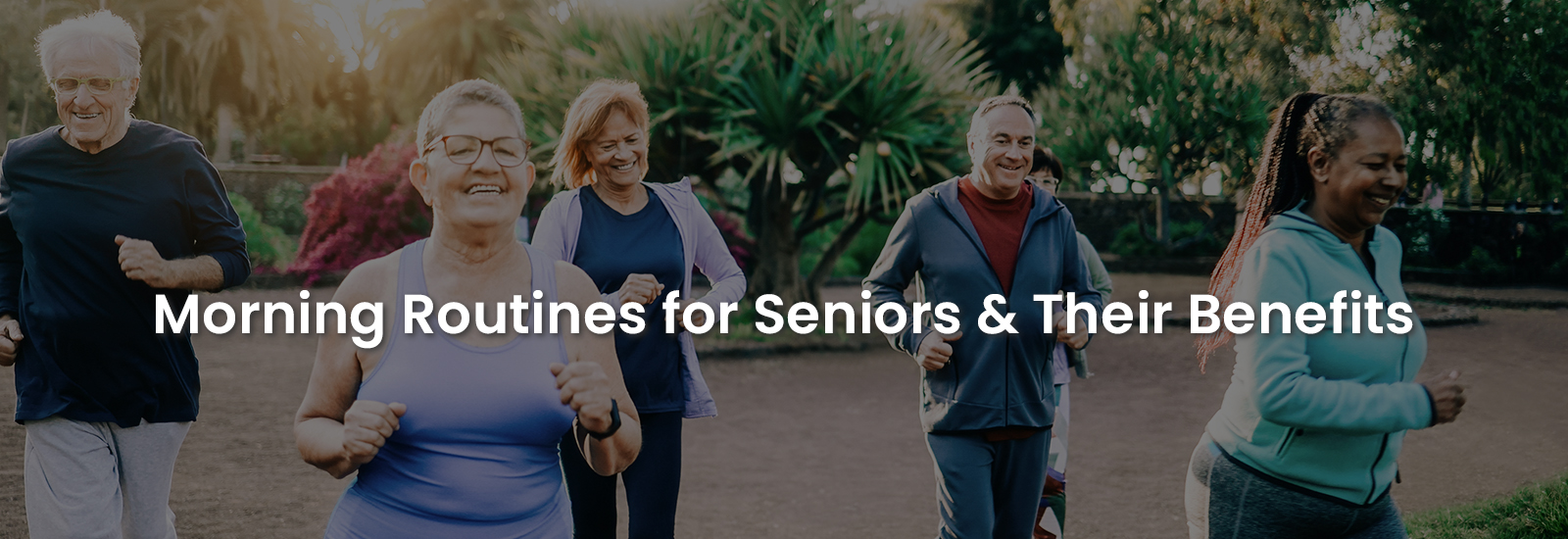
Walking is a low-impact aerobic exercise that primary care physicians often recommend for seniors in order to improve their overall health and well-being. Seniors, however, are more susceptible to fall related injuries associated with walking, which can negatively impact their fitness levels and quality of life. Therefore, it is crucial to take a few steps to ensure their safety when they go for a walk next time! In this blog post, we will share detailed information about walking benefits for seniors and some additional safety measures to ensure their walking experience is safe and enjoyable. Read on to learn more.
Health Benefits of Walking

1. Increases energy
Studies have found that regular, low-intensity exercise such as walking can increase energy levels by up to 20%. It helps improve blood flow and oxygen supply to the muscles and keeps seniors feeling more active throughout the day.
2. Strengthens muscles & bones
Walking is also considered a weight-bearing exercise, which strengthens bones and muscles. As a result, it helps improve bone density and prevents arthritis, osteoporosis, etc. According to a study, 20 minutes of walking a day reduces the risk of disability due to arthritis in older adults.
Besides, walking can also help seniors maintain and improve their muscle strength, balance, and coordination, which reduces the risk of falls.
Read More: A Complete Guide to Managing Osteoporosis in Seniors
3. Promotes heart health
According to the American Heart Association, walking can play a key role in reducing the risk of heart disease, stroke, and other cardiovascular diseases. It promotes heart health by lowering blood pressure, reducing bad cholesterol (LDL) levels, and increasing good cholesterol (HDL) levels.
Read More: 3 Ways to Maintain Healthy Cholesterol Levels in Seniors
4. Manages weight
Walking can boost metabolism, the rate at which our bodies burn calories. Regular walking can increase metabolic rate, which means individuals burn more calories even when they are not exercising. Additionally, walking can help build muscle mass, which burns more calories than fat tissues.
5. Improves mental health
Walking can reduce stress and anxiety by releasing endorphins, a feel-good hormone that improves mood and reduces stress and anxiety. Regular walks can also help increase serotonin and dopamine production, two neurotransmitters that boost mood and emotions.
Besides, this low-impact activity can also improve cognitive function by increasing blood flow to the brain and promoting new brain cell growth.
6. Manages diabetes
Walking regularly increases the body’s sensitivity to insulin, making it easier for glucose to enter the cells and helps reduce blood sugar levels. In addition, it can also help muscle cells absorb glucose from the bloodstream, which reduces the amount of sugar circulating in the blood.
Besides, walking can help burn calories, reduce excess weight, and lower stress levels, which can in turn help manage blood sugar levels in the body.
Read More: Do’s & Don’ts for a Fasting Sugar Blood Test
How to Ensure a Safe Walking Routine for Seniors

1. Wear proper footwear
The right footwear provides maximum support and stability, which are essential especially for seniors with weak bones and muscles. When choosing footwear for seniors, prioritize safety and comfort over style. The following are a few features seniors should look for while choosing their footwear for walking.
- Choose shoes with a firm sole, supportive heel cup, and good arch support.
- Check the fittings of the shoes because ill-fitting shoes can cause discomfort, blisters, and pain.
- The footwear should be lightweight and breathable to prevent foot odor or infections.
- Use footwear with elastic closures, as they are easier to put on and take off.
2. Avoid walking in extreme weather conditions
Do not walk in extreme weather conditions such as high heat, cold temperatures, heavy rain, snow, and ice. These weather conditions can increase their risk of falls, dehydration, heatstroke, and hypothermia. Seniors are more vulnerable to these conditions due to their decreased ability to regulate body temperature.
Seniors must avoid walking between 11 a.m. and 3 p.m., typically the hottest part of the day in the summer.
3. Choose walking routes carefully
Seniors who enjoy walking outdoors should choose their walking route carefully. They should opt for well-lit walking routes that increase their visibility. Therefore, they can avoid obstacles or hazards that may cause falls, such as uneven pavement or cracks in the sidewalk.
Seniors should choose sidewalks, flat surfaces, walking trails, designated paths or parks for walking.
4. Avoid texting or calling
Walking requires focus and attention, and individuals should be well aware of their surroundings while walking. Texting or making phone calls during walks can be distracting and increase the risk of falls and injuries.
When walking, seniors should keep their phones in their pockets or bag or turn them off to avoid distractions. If seniors need to use their phone, they should stop walking and find a safe and quiet place.
5. Carry a water bottle
Seniors are more susceptible to dehydration because the ability to regulate fluids changes with age. Carrying a water bottle can prevent heat exhaustion and ensure adequate hydration while walking.
Seniors should carry an easy-to-hold, lightweight water bottle with a secure cap to avoid spilling. They should also sip water at regular intervals throughout their walk, especially during hot weather or when walking uphill.
6. Use a walking stick if required
Walking canes provide additional balance and stability for seniors having difficulty maintaining their balance. It can also help reduce pressure on the joints, especially the knees, and hips. Additionally, a walking stick can distribute body weight evenly and prevent falls due to uneven terrain.
Walking sticks should be lightweight, sturdy, and suitable for seniors’ height. It is also crucial to use it correctly, holding it at the correct height and placing it firmly on the ground before taking a step.
Conclusion
Walking is not only a great form of exercise but also a fun activity that promotes healthy aging. As we celebrate National Walking Day on April 5th, let us encourage seniors to prioritize their health and well-being by taking regular walks. Also, follow these important safety measures to ensure they can enjoy walking benefits to improve their health and the quality of life.
For any queries or concerns about seniors’ health, contact EliteCare Health Centers, one of the best medical clinics in Florida for a wide range of senior care services. Visit our website or contact your nearest healthcare center to schedule an appointment with our board-certified primary care physicians.






